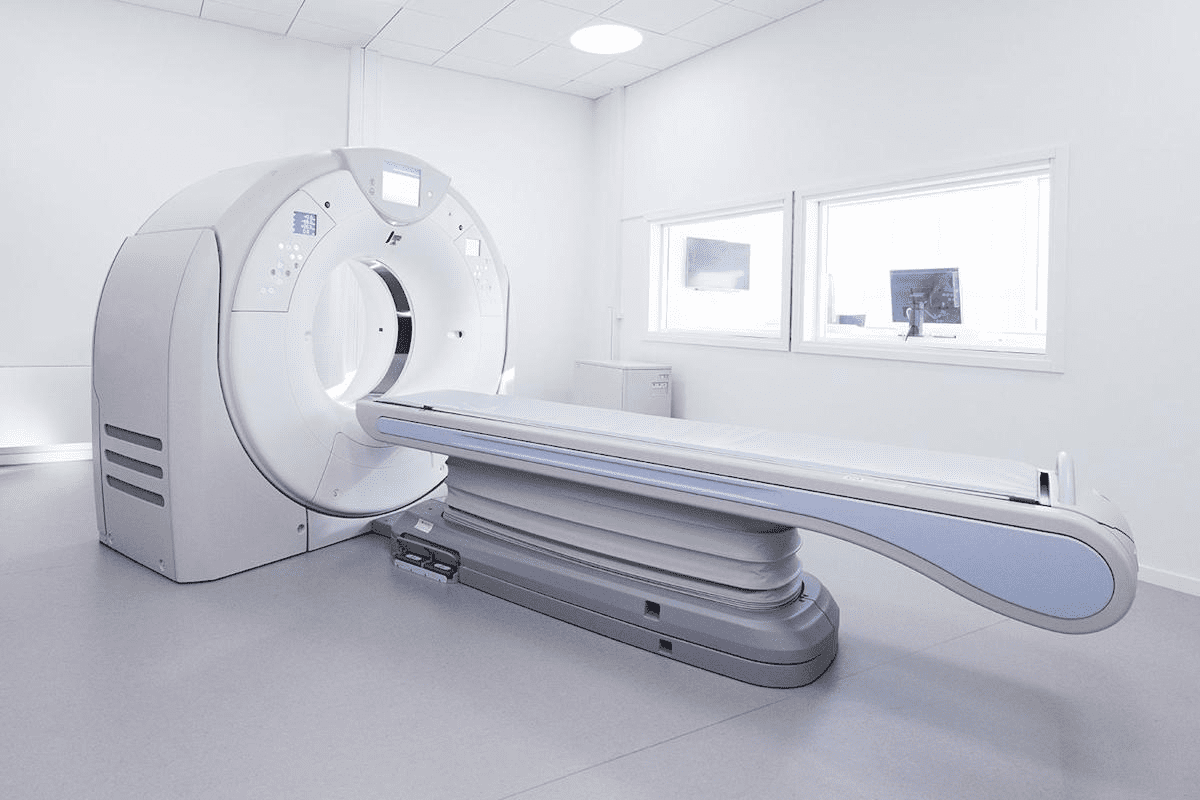Last Updated on November 26, 2025 by Bilal Hasdemir

Are you looking for a way to ease spine or joint pain? Learn about intra-articular facet injection at Liv Hospital. We focus on advanced care and keeping you safe.Learn key facts about intra articular facet injections for joint pain relief.
Intra-articular facet injections help find and treat pain from facet joints. The National Center for Biotechnology Information says these injections mix a local anesthetic and a steroid. They go right into the joint, helping those with chronic pain.
We know how much joint pain affects your life. At Liv Hospital, we aim to give you the best care. We use facet joint injections to find and treat your pain. This way, you get the most effective treatment.
Key Takeaways
- Intra-articular facet injections diagnose and treat facet joint pain.
- The procedure involves injecting a local anesthetic and a steroid into the joint.
- Facet joint injections are used for chronic pain not relieved by conservative management.
- The injections can provide significant pain relief for patients.
- Liv Hospital prioritizes patient safety and advanced care in performing these injections.
Understanding Facet Joint Pain and Its Impact

Understanding facet joint pain is key to managing it well. It can really affect someone’s life, making simple tasks hard to do.
Common Causes of Facet Joint Dysfunction
Facet joint dysfunction comes from many things. Arthritis is a big one, causing inflammation and wear on the joints. Degenerative disc disease also plays a role, changing how the spine works and stressing the joints more.
Getting hurt, like from a fall or car crash, can also hurt the facet joints. Other causes include injuries from doing the same thing over and over and bad posture, which puts strain on the joints. Knowing what causes it helps doctors find the right treatment.
Recognizing Symptoms of Facet Joint Pain
Spotting the signs of facet joint pain is important for getting the right help. People often feel localized pain in their neck or back, which can spread. Stiffness and not being able to move as well are common, too.
Pain can get worse when you twist or bend. Sometimes, the pain feels like it’s coming from somewhere else, making it hard to find the source. A detailed check-up is needed to figure out how bad the problem is.
What Is an Intra-Articular Facet Injection?

Intra-articular facet injections put medicine right into the facet joint. This helps cut down inflammation and eases pain in the joint. It targets the pain source directly, giving relief to those with facet joint issues.
Definition and Medical Purpose
An intra-articular facet injection is a minimally invasive procedure. It involves injecting medication directly into the facet joint. The main goal is to find or treat pain from the facet joints.
The facet joints are between the vertebrae and can get inflamed or irritated. This causes pain. Injecting medicine into these joints helps figure out if they’re the pain source or offer relief.
History and Development of Facet Joint Procedures
Facet joint injections have a long history, with big steps forward in recent years. At first, they were done without using imaging, relying on body landmarks. But with new imaging like fluoroscopy and CT scans, they’ve become much more precise.
Now, facet joint injections are key in managing chronic pain from facet joint issues. They’re a big help for doctors in diagnosing and treating pain.
There’s also a move towards more minimally invasive methods. This makes recovery faster and improves results for patients. As technology keeps getting better, we’ll see even more advanced ways to manage pain through facet joint injections.
The Science Behind Intra-Articular Facet Injections
Intra-articular facet injections work by targeting the pain in the spinal facet joints. They are designed to help by focusing on the pain causes in these joints.
Anatomy of Spinal Facet Joints
Spinal facet joints, or zygapophysial joints, connect vertebrae. They help keep the spine stable and flexible. These joints are made by the articular processes of the vertebrae.
The joints have a capsule, synovial lining, and cartilage. The capsule has many pain-sensing neurons. This helps us understand how pain in these joints happens.
How Facet Injections Target Pain Mechanisms
Facet injections aim to block pain by using anti-inflammatory medicine. This medicine is a mix of a local anesthetic and a corticosteroid.
The anesthetic stops pain signals right away. The corticosteroid cuts down inflammation, helping with pain over time. By putting this medicine in the joint, we can lessen pain and swelling. This improves the patient’s quality.
Key Components of Facet Joint Injections:
- Local Anesthetic: Provides immediate pain relief
- Corticosteroid: Reduces inflammation
| Component | Function | Effect |
| Local Anesthetic | Blocks nerve signals | Immediate pain relief |
| Corticosteroid | Reduces inflammation | Long-term pain relief |
Understanding the anatomy of spinal facet joints and how injections work is key. This knowledge shows how effective these injections are. They are a valuable tool for managing pain in facet joints.
Diagnostic vs. Therapeutic Facet Joint Injections
It’s important to know the difference between diagnostic and therapeutic facet joint injections. They help in managing pain by providing both diagnosis and relief.
Using Diagnostic Facet Injections to Identify Pain Sources
Diagnostic facet injections help find where pain comes from. A local anesthetic is injected into the facet joint. If the pain goes away, it shows the joint is the pain source.
Key benefits of diagnostic facet injections include:
- Accurate diagnosis of facet joint pain
- Guiding further treatment plans
- Avoiding unnecessary surgical interventions
These injections are done under fluoroscopy for precise placement.
Therapeutic Benefits of Facet Joint Interventions
Therapeutic facet joint injections aim for long-term pain relief. They use a corticosteroid to reduce inflammation and pain.
The therapeutic benefits of facet joint injections include:
- Significant reduction in pain
- Improved functional ability
- Potential avoidance of more invasive procedures
We often mix diagnostic and therapeutic elements in one procedure. First, a local anesthetic is used to confirm the pain source. Then, a corticosteroid is given for lasting relief.
The table below shows the main differences between diagnostic and therapeutic facet joint injections:
| Characteristics | Diagnostic Facet Injections | Therapeutic Facet Injections |
| Purpose | Identify pain source | Provide pain relief |
| Medication Used | Local anesthetic | Corticosteroid (often with local anesthetic) |
| Duration of Relief | Temporary (hours to days) | Long-term (weeks to months) |
| Guidance | Fluoroscopic guidance | Fluoroscopic guidance |
In conclusion, both types of facet joint injections are vital for pain management. Knowing their differences helps healthcare providers tailor treatments to each patient’s needs.
Step-by-Step Procedure for Facet Joint Shots
Getting facet joint injections involves several steps. From getting ready to aftercare, we help our patients at every stage. This ensures a smooth and effective treatment.
Pre-Procedure Preparation
Before the injection, patients get a detailed check to see if it’s right for them. This includes looking at their medical history, a physical check, and sometimes, imaging tests.
To get ready for the procedure, patients are told to:
- Stop taking blood thinners as told by your doctor.
- Do note to eat or drink for a few hours before.
- Have someone drive them home because they might be sleepy.
The Injection Process
On the day, patients lie on their stomachs on an X-ray table. The area is cleaned and numbed with a local anesthetic.
Using X-ray images, the doctor carefully puts a needle into the joint. They might use dye to make sure the needle is in the right place. Then, they inject a mix of anesthetic and corticosteroid into the joint.
Post-Procedure Care and Monitoring
After the injection, patients are watched for any immediate issues. They might feel some soreness, but it usually goes away quickly.
To handle any discomfort, patients are advised to:
- Use ice on the injection site to reduce swelling.
- Take pain relievers if needed, but only as told by their doctor.
- Avoid hard activities for a day or two.
It’s important to follow up to see how the treatment worked. Patients usually have a follow-up to check on their progress and discuss next steps.
| Procedure Step | Description | Key Considerations |
| Pre-Procedure Preparation | Evaluation and preparation before the injection | Stop anticoagulants, fasting, and arrange for post-procedure transport |
| The Injection Process | Insertion of a needle into the facet joint under fluoroscopic guidance | Local anesthetic, contrast dye, corticosteroid injection |
| Post-Procedure Care | Monitoring and care after the injection | Apply ice, manage pain with medication, and avoid strenuous activities |
Advanced Imaging Techniques for Precise Needle Placement
Advanced imaging has changed the game in pain management, like in facet injections. These methods make injections more accurate and safe. This leads to better results for patients.
Fluoroscopy-Guided Facet Injections
Fluoroscopy gives live X-ray images, helping doctors place needles exactly. Fluoroscopy-guided facet injections are common in pain clinics. It lets doctors see the needle and joint live, ensuring the right spot.
Fluoroscopy makes injections more precise, lowering risks and improving results. It also lets doctors use contrast to check the needle’s position.
CT-Guided Paravertebral Facet Joint Injection
CT scans are used for complex facet injections when fluoroscopy isn’t enough. CT-guided paravertebral facet joint injection gives detailed images for precise targeting. It’s great for tricky spots like the neck or upper back.
CT scans show soft tissues around the joint, helping avoid problems. But it uses more radiation than fluoroscopy. It’s used when its benefits are worth the risks.
Importance of Imaging in Procedural Success
Getting the needle in the right spot is key for facet injections. Imaging,ike fluoroscopy and CT, is vital. They ensure:
- Correct needle placement
- Preventing complications
- Accurate delivery of treatments
- Better patient safety and results
In short, advanced imaging is key in pain management, like in facet injections. It boosts the precision, safety, and success of these treatments.
Regional Variations: From Lumbar Facet Joint Injections to Facet Injection Neck Procedures
Facet joint injections target pain in different spinal areas. They can be done in the neck, thoracic, and lower back. This makes them a great option for many patients.
Cervical (Neck) Facet Injections
Cervical facet injections help with neck pain. They treat the facet joints in the neck. This is for pain caused by injury, wear and tear, or other reasons.
To do these injections, we use special X-ray guidance. This is key in the neck because of its complex anatomy.
Thoracic Facet Injections
Thoracic facet injections are for mid-back pain. The thoracic spine is special because of the rib cage. But it can also have facet joint problems.
These injections work like others, using X-rays to find the right spot. They’re helpful for trauma or degenerative conditions in the thoracic spine.
Lumbar (Lower Back) Facet Injections
Lumbar facet injections are common for lower back pain. They inject medication into the affected joints. This helps reduce inflammation and pain.
They’re used when other treatments don’t work. These injections can both find and treat the pain source.
Medications Used in Intra-Articular Facet Injection
To understand the benefits of facet injections, it’s essential to know about the medications involved. Intra-articular facet injections are a procedure used to diagnose and treat facet joint pain. The medications used play a key role in their effectiveness.
Local Anesthetics: Types and Functions
Local anesthetics are a primary component of facet injections. They work by temporarily numbing the facet joint. This provides immediate pain relief.
This not only helps in diagnosing the source of pain but also offers therapeutic relief. Commonly used local anesthetics include lidocaine and bupivacaine. Each has a different duration of action.
The choice of local anesthetic depends on the desired duration of action and the specific needs of the patient. For instance, lidocaine has a shorter onset and duration. It’s suitable for diagnostic procedures. Bupivacaine provides longer-lasting relief, often used for therapeutic purposes.
Corticosteroids: Anti-inflammatory Effects
Corticosteroids are another key medication used in facet injections. They have potent anti-inflammatory properties. This helps reduce swelling and pain in the facet joints.
By decreasing inflammation, corticosteroids can provide longer-term pain relief compared to local anesthetics alone. The use of corticosteroids in facet injections is beneficial for patients with inflammatory arthritis or significant joint inflammation. Common corticosteroids used include triamcinolone and methylprednisolone.
Other Therapeutic Agents
Apart from local anesthetics and corticosteroids, other therapeutic agents may be used in facet injections. These can include hyaluronic acid derivatives and platelet-rich plasma (PRP). Hyaluronic acid derivatives help improve joint lubrication. PRP is used for its regenerative properties.
The selection of medication is tailored to the individual patient’s needs. Factors such as the severity of pain, presence of inflammation, and previous responses to treatments are considered. This personalized approach helps in maximizing the effectiveness of facet injections.
Expected Benefits and Success Rates
It’s important for patients and doctors to know about facet joint injections. These injections help manage joint pain and offer both benefits for diagnosis and treatment.
Short-term vs. Long-term Pain Relief
Facet joint injections can help with both short-term and long-term pain. Short-term relief comes from local anesthetics, which help find the pain’s source. Studies show these injections can reduce pain for weeks to months.
For long-term relief, corticosteroids are used. They reduce inflammation and manage pain over time.
Functional Improvement Outcomes
Facet joint injections also improve function. By reducing pain and inflammation, patients move better and live better lives. This is key for those whose daily activities are hurt by facet joint pain.
Factors Affecting Treatment Success
Many things affect how well facet joint injections work. Precise needle placement is key, often helped by imaging like fluoroscopy. The type of medication and the patient’s condition also matter.
Understanding these factors helps doctors explain what patients can expect. This improves treatment success and patient satisfaction.
Potential Risks and Side Effects of Facet Joint Injections
It’s important to know the risks and side effects of facet joint injections. They are generally safe but can cause minor side effects and, rarely, serious problems.
Common Minor Side Effects
Most people do well with facet joint injections. But some might feel minor side effects. These can include:
- Temporary pain or discomfort at the injection site
- Mild headache or fatigue
- Facial flushing or sweating
- Temporary numbness or weakness in the affected area
These side effects usually go away in a few days.
Rare but Serious Complications
Even though rare, serious problems can happen. These include:
- Infection at the injection site
- Nerve damage or spinal cord injury
- Allergic reactions to the injected medications
- Bleeding or hematoma formation
It’s key to know about these risks. If you have severe symptoms, get medical help right away.
Risk Mitigation Strategies
To lower the risks of facet joint injections, several steps can be taken:
- Careful patient selection and pre-procedure assessment
- Use of advanced imaging techniques for precise needle placement
- Strict adherence to sterile technique during the procedure
- Monitoring of patients after the procedure for any adverse effects
By using these strategies, doctors can make the treatment safer and more effective for patients.
| Risk Mitigation Strategy | Description | Benefit |
| Careful Patient Selection | Thorough assessment of the patient’s medical history and current condition | Reduces risk of complications |
| Advanced Imaging Techniques | Use of fluoroscopy or CT guidance for precise needle placement | Improves accuracy and safety |
| Sterile Technique | Strict adherence to sterile procedure to prevent infection | Minimizes risk of infection |
| Post-Procedure Monitoring | Close observation of the patient after the procedure | Early detection of adverse effects |
Patient Selection: Who Should Consider Facet Shots?
Choosing the right patients for facet joint injections is key to pain relief. These injections help those with chronic pain who haven’t found relief with other treatments.
Ideal Candidates for the Procedure
We look for patients with facet joint pain that hasn’t gone away with other treatments. Those with a clear diagnosis of facet joint syndrome often see the most benefit.
A study shows that the success of facet joint injections depends on picking the right patients and doing the injections correctly.
“The key to successful facet joint injection therapy lies in identifying patients with facet-mediated pain and using imaging guidance to ensure accurate needle placement.”
Contraindications and Precautions
While facet joint injections can help, there are things to watch out for. Patients with active infections or bleeding disorders should not get this treatment. Also, those on anticoagulant therapy might need to stop their meds before the injection.
- Active infections
- Bleeding disorders
- Anticoagulant therapy
Pre-procedure Assessment Process
The pre-procedure check is vital to see if a patient is a good fit for facet joint injections. It includes a detailed medical history, physical exam, and imaging, like an MRI or CT scan, to confirm the pain’s source.
We also look at how well the patient has done with other treatments and their overall health.
By carefully picking patients and doing thorough checks before the procedure, we can make facet joint injections safer and more effective.
Conclusion: The Future of Facet Joint Interventions
Intra-articular facet injections have become a key treatment for facet joint pain. They offer relief and improve function, making them popular. Both patients and healthcare providers see their value.
The future looks bright for facet joint interventions. Research and new techniques are on the horizon. This could lead to better results and more treatment options.
New agents and imaging methods might improve facet joint injections. This could make the procedure more precise and effective. As the field grows, facet joint treatments will stay important in pain management.
Healthcare providers can keep up with these advancements. This means they can offer the latest and best treatments. This will improve care quality and patient results.
FAQ
What is a facet joint injection?
A facet joint injection is a procedure. It involves putting medication into the facet joints of the spine. This is to diagnose or treat pain.
What is the purpose of intra-articular facet injections?
Intra-articular facet injections are used to treat facet joint pain. They inject medication directly into the joint.
How do facet joint injections work?
Facet joint injections deliver medication to the facet joints. This reduces inflammation and relieves pain.
What are the common causes of facet joint dysfunction?
Facet joint dysfunction can be caused by several things. These include degenerative changes, trauma, and repetitive strain on the spine.
What are the symptoms of facet joint pain?
Symptoms of facet joint pain include localized pain, stiffness, and limited mobility. These symptoms occur in the affected region of the spine.
What is the difference between diagnostic and therapeutic facet joint injections?
Diagnostic facet joint injections help find the source of pain. Therapeutic injections are used to treat the pain.
What medications are used in facet joint injections?
Medications used include local anesthetics, corticosteroids, and other therapeutic agents. These are used in facet joint injections.
What are the benefits of facet joint injections?
Facet joint injections offer short-term and long-term pain relief. They also improve function and reduce inflammation.
What are the potential risks and side effects of facet joint injections?
Risks and side effects include minor side effects like pain at the injection site. Rare but serious complications like infection or nerve damage can also occur.
Who is a good candidate for facet joint injections?
Patients with facet joint pain that hasn’t responded to conservative treatments are good candidates. They may benefit from facet joint injections.
How are facet joint injections performed?
Facet joint injections are performed using imaging guidance. This includes fluoroscopy or CT to ensure accurate needle placement.
What is the role of imaging in facet joint injections?
Imaging guidance is key for precise needle placement. It ensures the success of the procedure.
Are facet joint injections the same for different spinal regions?
While the basic principle is the same, facet joint injections can vary. This depends on the spinal region being treated, such as lumbar or cervical facet injections.
Reference:
Manchikanti, L., Pampati, V., Bakhit, C. E., & Rivera, J. J. (2012). An update of the valuation of therapeutic thoracic facet joint interventions. Pain Physician, 15(3), 229-250. https://pubmed.ncbi.nlm.nih.gov/22828694/






